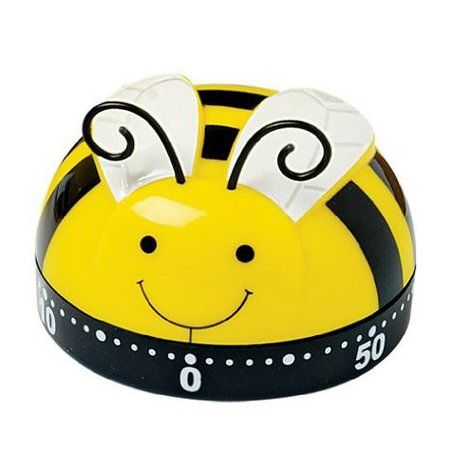
If you’re reading the Beeminder blog there’s a 95% chance you know about the Pomodoro Technique. The idea is to decide a task, do focused work on it for 25 minutes, and then get up and take a 5-minute break. Rinse and repeat.
Apparently it was invented in the 1980s but Danny independently invented [1] a variant around 2004 with 45-minute chunks of work and 15-minute breaks. [2] We call one of these 45-minute pomodoros a tock.
Prespecifying a well-defined task to work on during the tock is key. I also keep a blank sheet of paper next to me so that if I notice myself distracted I can write down what was distracting me. Then I don’t have to juggle all the other things my brain wants to think about in working memory, and when I’m done I have a handy list of things to either goof off with for the next 15 minutes, or I have a list of things that are maybe more urgent to be working on. [3]
One of the biggest failure modes with this productivity hack is never getting around to starting the next tock. It can also fall apart if you’re feeling particularly prone to distraction and you keep starting tocks and then waking up 45 minutes later in a puddle of your own drool. So here are two ideas for making tocking stickier.
1. Do hourly tocks
Try to start a tock every hour on the hour all day long. You can get ahead, but don’t let yourself fall behind. If you get ahead and build up a buffer you can go do other stuff for a while. Try to get 1 tock done for every hour you’re awake, or race a friend to see who can get more done in one day, or don’t eat dinner until you’ve completed 8, or whatever. Essentially this strategy comes down to: gamify it. But don’t worry, all our other ideas involve money!
2. Beemind it
I get really great mileage out of my tock road. [4] Danny wrote a script which starts a timer and announces my task to our Beeminder dev HipChat. Then when I’m finished I stop the timer, and it announces my time in the chat room, and automatically enters a datapoint for me. My Beeminder road keeps me starting tocks while the social accountability keeps me picking meaningful tasks. And if I get caught by TagTime doing something off-topic during the tock, then the script outs me and enters a -2 on my goal. [5] Since I’ve got the road dialed in so that every day is a beemergency, this is a big disincentive. I’m also incentivized to work diligently to finish in time and not let the task go over, because if I go over I only get half a point. Otherwise I get points in exact proportion to the percentage of the tock I completed, i.e. a 37-minute task is worth 37/45 minutes, or 0.82 tocks.
If that sounds over-complicated, you could certainly just beemind tocks without all the rest. Katja Grace has mentioned — in her brilliant 2012 post, “On the Goodness of Beeminder” — beeminding number of pomodoros completed. If she gets distracted during the pomodoro she doesn’t get to count it, and that’s incentive enough to stay on task.
Next post: Pomodoro Poker.
Footnotes
[1] And then he and I refined it as part of the Voluntary Harassment Program (an early precursor of Beeminder).
[2] There’s a lot of conflicting research on the optimal amount of time to focus on a task and for breaks. The Wikipedia entry for Attention Span cites times from 10 to 40 minutes. Another study suggests 52-minute chunks of work and 17-minute breaks.
[3]
This might already be part of the pomodoro specification? I’m not sure, but I first heard the idea from
Andrew Critch
at a
CFAR
workshop.
This idea — known as Distraction Logging — is due to
Andrew Critch
of
CFAR
(where I learned about it).
[4]
True story: I just forgot to start a tock on writing this blog post because I was already safe on my
tock road
for the day. Facepalm.
Update: and I just got caught off-task by TagTime while writing this post, so I get to do 5+ tocks instead of 3+ for tomorrow.
[5] Our friend John Bachir points out that this is a violation of the QS First principle since those -2’s make the Beeminder graph diverge, in some sense, from measuring the actual tockage. I guess it’s a hack to make the incentives work.
Image credit: Busy Little Kitchen Timer (though it seems not to actually be(e) on sale anymore)